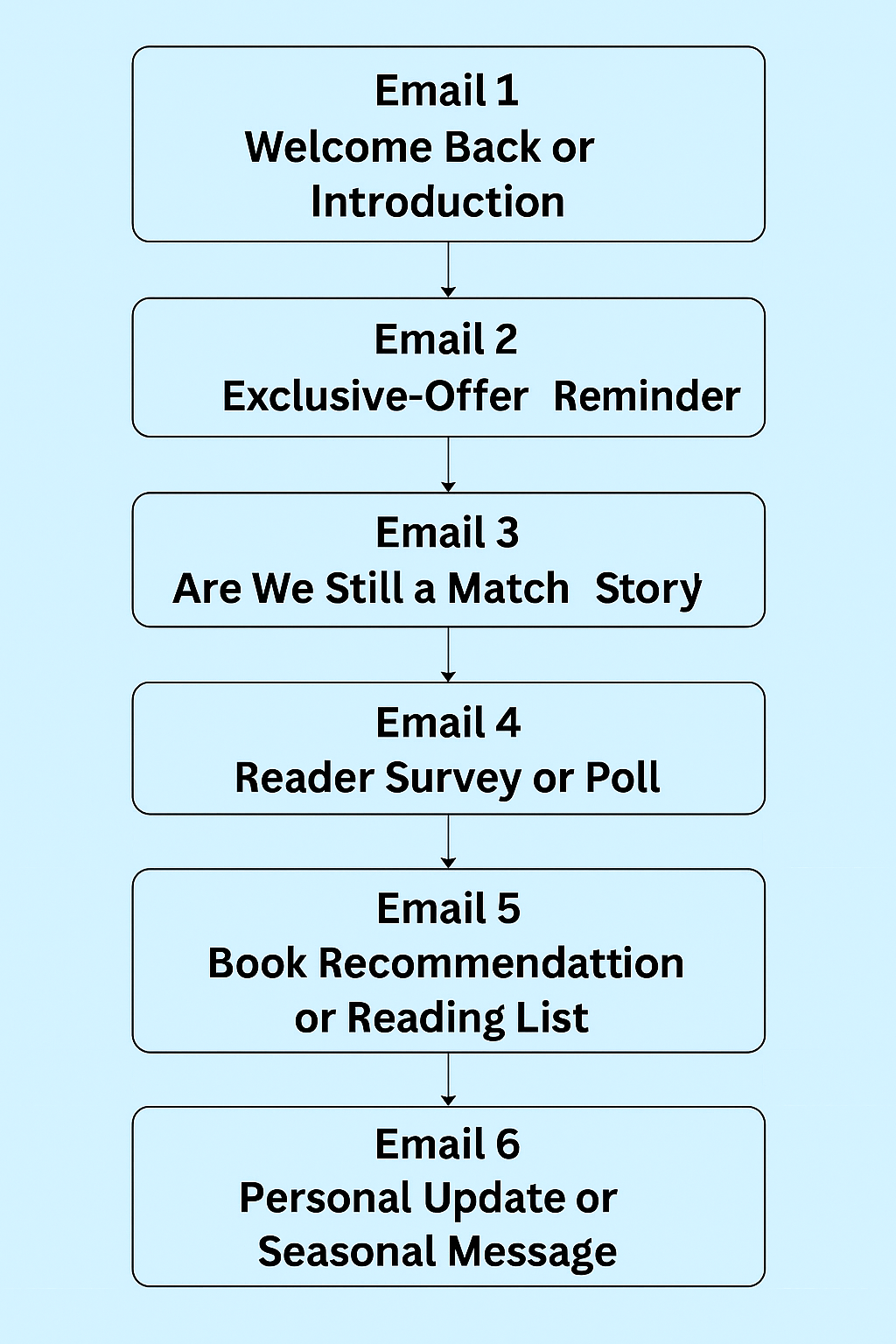Newsletter Engagement Flow for Indie Authors: Keeping Readers Interested Between Book Launches
Your email list is more than a sales tool—it’s your primary bridge to your readers. But what happens in the months between book launches? How do you maintain interest, connection, and trust when there’s no new release to announce?
That’s where a smart, automated Newsletter Engagement Flow comes in. This long-term email strategy keeps your list warm and responsive by delivering high-value content, updates, and bonus materials on a consistent schedule. Rather than going silent and hoping your audience remembers you when your next book arrives, you’ll build a rhythm that nurtures loyalty and primes future sales.
In this guide, we’ll walk through how to set up a multi-email engagement sequence that deepens reader relationships, reduces list churn, and boosts your overall marketing performance. We’ll cover timing, content strategy, segmentation, tools, and automation—while keeping the tone friendly, natural, and distinctly author-branded.
Why Newsletter Engagement Matters
Email is the most direct, reliable form of communication you have with your readers. Social media algorithms change. Ads cost money. But when a reader opens your newsletter, they’re giving you their attention—and that’s priceless.
The problem is, if you only show up when you’re selling something, your readers learn to tune you out. Engagement flows solve that by giving your subscribers a steady stream of value. You remind them why they joined in the first place: because they love your voice, your world, and the experience you create.
Consistent engagement leads to:
- Higher open and click-through rates
- Better deliverability and inbox placement
- Reduced unsubscribes
- Warmer leads for your next launch
Anatomy of a Newsletter Engagement Flow
Unlike launch or promo flows, an engagement flow is evergreen. It’s not built around urgency or sales. It’s designed to slowly deepen your relationship with each subscriber over a span of weeks or months.
A typical flow might include 6–10 emails, sent weekly or biweekly, covering a mix of content types:
Email 1: Welcome Back or Introduction
Subject: "Glad we’re still connected. Here’s what’s ahead."
Start by setting expectations. Let the reader know you’ll be sharing fun updates, exclusive extras, and behind-the-scenes glimpses. Reintroduce yourself and your books if it’s been a while.
Email 2: Behind-the-Scenes Peek
Subject: "Here’s how this story came to life..."
Share a piece of your writing journey. It could be the inspiration for a character, the hardest scene to write, or what you cut from the draft. Invite readers to reply with their thoughts.
Email 3: Bonus Content or Short Story
Subject: "Your exclusive bonus is here."
Deliver a reader magnet, deleted chapter, character Q&A, or a flash fiction piece. Make the subscriber feel rewarded for sticking around.
Email 4: Reader Survey or Poll
Subject: "What do you want more of?"
Ask your readers what they love. Favorite characters? Preferred formats? Future genres? Not only does this build interaction—it gives you data to shape your next releases.
Email 5: Book Recommendation or Reading List
Subject: "Books I think you’ll love."
Share a few hand-picked recommendations, either from your own catalog or other indie authors in your genre. If you include affiliate links, disclose appropriately.
Email 6: Personal Update or Seasonal Message
Subject: "A quick note before the holidays..."
Let readers in on your life. Share what you’re working on, reading, or excited about. Mention upcoming projects without launching into a promo.

Best Practices for Engagement Sequences
- Write like a person, not a pitch: Keep your tone conversational and sincere.
- Keep it skimmable: Use headers, bolding, and short paragraphs.
- Invite replies: Ask a question in most emails to encourage connection.
- Use tags: Track who opens, clicks, or replies—and segment accordingly.
Tools to Automate Newsletter Engagement
To set up this flow, use platforms like:
These services let you trigger sequences based on tag, time, or signup source. You can pause or edit the sequence at any point to insert new content or updates.
Mistakes to Avoid
- Going silent: Inactivity leads to unsubscribes and cold leads.
- Sending only promos: Readers joined for stories, not ads.
- Overwriting: Keep emails simple, useful, and focused.
- Forgetting segmentation: Don’t send a reader of your fantasy series a romance teaser.
After the Flow: Building the Ongoing Connection
Once the flow ends, transition subscribers into your regular newsletter or route them to a specialized flow (e.g., launch, review team, backlist explorer). Readers who engage with your evergreen content are more likely to become superfans.
Use engagement data to:
- Identify your most loyal readers
- Test ideas for future books
- Invite subscribers into private communities or launch teams
Final Thoughts: Stay Present, Stay Valued
Expansion Opportunities
· Introduce a branching sequence that responds to reader interests (e.g., separate flows for fantasy vs. mystery).
· Include reader-submitted content such as fan art or Q&A replies.
· Offer time-limited downloads to increase urgency.
· Rotate seasonal themes or holiday-based newsletters.
· Tie newsletter engagement to loyalty tiers or reader rewards.
The Newsletter Engagement Flow is your way of saying, "I haven’t forgotten you." It reminds your readers why they liked you in the first place—and keeps them excited for what’s coming next.
Don’t let silence kill momentum. Give your audience something to look forward to—week after week, story after story.
The Newsletter Engagement Flow is your way of saying, "I haven’t forgotten you." It reminds your readers why they liked you in the first place—and keeps them excited for what’s coming next.
Don’t let silence kill momentum. Give your audience something to look forward to—week after week, story after story.

